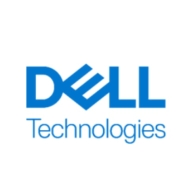

FlexPod XCS and Dell PowerEdge Rack Servers compete in the data center solutions category. FlexPod XCS seems to have the upper hand with its unified support model that simplifies deployment and ongoing management.
Features: FlexPod XCS distinguishes itself with pre-designed architecture, ensuring compatibility and flexibility through seamless integration of components, backed by joint Cisco and NetApp support for easier issue resolution. Key features include powerful scalability, FlexClone, and mirroring capabilities that expand storage and deployment options. Meanwhile, Dell PowerEdge Rack Servers offer robust performance and reliability through iDRAC's remote management, along with OpenManage Essentials for easy hardware management. High resilience and support for virtualization and fault tolerance are noteworthy, accommodating diverse high-demand workloads.
Room for Improvement: FlexPod XCS users call for quicker certification of Cisco and NetApp updates and improved, unified support services to reduce vendor switching. A cohesive interface for component management is desired for smoother integration and better task automation. Dell PowerEdge Rack Servers could benefit from reduced configuration complexity, more efficient firmware updates, and broader monitoring capabilities. Simplifying the OpenManage Console and ensuring a cohesive upgrade path for hardware iterations are also suggested.
Ease of Deployment and Customer Service: FlexPod XCS's verified architecture and single-vendor support streamline deployment, simplifying data center operations despite occasional cross-vendor support inconsistencies. Dell PowerEdge Rack Servers provide strong customer service aided by iDRAC's remote management tools, although managing separate components remains complex.
Pricing and ROI: FlexPod XCS is considered expensive, yet its scalability and management efficiencies justify the cost by reducing operating expenses and enhancing ROI over time. Licensing complexities for Cisco, NetApp, and VMware require careful cost evaluation. Meanwhile, Dell PowerEdge Rack Servers are competitively priced, offering good ROI through consistent reliability and lower operational expenses. The ability to customize configurations appealingly suits various business needs, although a more extensive pricing strategy could enhance reach.


Dell PowerEdge Rack Servers are designed to optimize performance and efficiency in a data center environment, supporting various applications. Dell stands as the leading vendor in accelerated servers for AI, commanding a 33.8% revenue share. Based on user reviews, Dell PowerEdge Rack Servers supporting tasks from basic web hosting to more demanding applications like data analytics and virtualization. They are engineered to offer high performance, reliability, and scalability. With a focus on automation and integrated security, these servers simplify operations and protect against threats, making them a smart choice for businesses of all sizes.
Dell PowerEdge Rack Servers are a robust, secure, and scalable solution that can meet the diverse needs of businesses, backed by comprehensive support. Benefits to look for in reviews include performance, reliability, scalability, and customer support.
Dell PowerEdge Rack Servers key features include:
In terms of implementation, Dell PowerEdge Rack Servers are used across various industries, from small businesses to large enterprises. They serve as the foundation for IT infrastructure, powering critical applications in healthcare, finance, education, and more. The adaptability of these servers means they can be tailored to specific industry needs, from handling large datasets in research institutions to supporting high-transaction databases in financial services.
FlexPod XCS is the secure platform your applications need from edge to cloud. Easily manage your suite of cloud-native, edge, and enterprise apps. Integrate advanced cloud services without compromising performance, security, reliability, or scale.
We monitor all Converged Infrastructure reviews to prevent fraudulent reviews and keep review quality high. We do not post reviews by company employees or direct competitors. We validate each review for authenticity via cross-reference with LinkedIn, and personal follow-up with the reviewer when necessary.